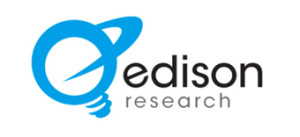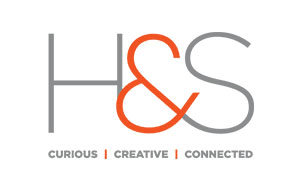Wendy’s wants you to start your day “con huevos!”
 Wendy’s new ad is letting fans know how they should start their day – con huevos!
Wendy’s new ad is letting fans know how they should start their day – con huevos!
 Wendy’s new ad is letting fans know how they should start their day – con huevos!
Wendy’s new ad is letting fans know how they should start their day – con huevos!
 86% of Chief Marketers Report Missed Revenue and Customer Acquisition Goals Due to Unfilled Functional Leadership Positions and Lack of Expertise
86% of Chief Marketers Report Missed Revenue and Customer Acquisition Goals Due to Unfilled Functional Leadership Positions and Lack of Expertise
 Univision’s TUDN announced that it has secured the exclusive Spanish-language rights to the Copa América Argentina – Colombia 2021.
Univision’s TUDN announced that it has secured the exclusive Spanish-language rights to the Copa América Argentina – Colombia 2021.
 A Majority of Respondents to 4A’s 2021 Impact of Advertising Survey Find That Their Agency’s Work Helped Their Clients Gain Market Share During 2020
A Majority of Respondents to 4A’s 2021 Impact of Advertising Survey Find That Their Agency’s Work Helped Their Clients Gain Market Share During 2020
 The 26th edition of The CMO Survey explores how marketing activities, spending, jobs, and performance have been affected by the COVID-19 pandemic, as well as increased political and social upheaval over the course of the past year.
The 26th edition of The CMO Survey explores how marketing activities, spending, jobs, and performance have been affected by the COVID-19 pandemic, as well as increased political and social upheaval over the course of the past year.
 Many companies have embraced the concept of customer experience (CX), but relatively few organizations have achieved mature, self-sustaining CX programs that enable enterprise-wide customer-centric culture and significantly improve customer satisfaction, loyalty, and advocacy. As with any business discipline, there is plenty of devil in the details to get CX right, but I am often surprised by the big ways companies undermine their CX outcomes from the start.
Many companies have embraced the concept of customer experience (CX), but relatively few organizations have achieved mature, self-sustaining CX programs that enable enterprise-wide customer-centric culture and significantly improve customer satisfaction, loyalty, and advocacy. As with any business discipline, there is plenty of devil in the details to get CX right, but I am often surprised by the big ways companies undermine their CX outcomes from the start.
 The Infinite Dial 2021 marks a significant year for the study, as the media measurement was done almost entirely during a time of quarantine or some level of restriction due to Covid-19.
The Infinite Dial 2021 marks a significant year for the study, as the media measurement was done almost entirely during a time of quarantine or some level of restriction due to Covid-19.
 Noticias Telemundo nnounced the launch of “Axios Latino,” a weekly English-language newsletter examining the key issues impacting the Latino community.
Noticias Telemundo nnounced the launch of “Axios Latino,” a weekly English-language newsletter examining the key issues impacting the Latino community.
 Every year, the RAB-Borrell Digital Benchmark report catalogues the health of digital marketing in the U.S. radio industry. Every year, the results are interesting ̶ but none, I would venture, can compete with 2020.
Every year, the RAB-Borrell Digital Benchmark report catalogues the health of digital marketing in the U.S. radio industry. Every year, the results are interesting ̶ but none, I would venture, can compete with 2020.
 In keeping with its commitment to highlight and amplify unheard or marginalized voices, this Thursday, March 18, at 10 p.m. ET and again on Sunday, March 21, at 8 p.m. ET Hemisphere Media Group’s WAPA Televisión and WAPA América will air “Sombras de Una Verdad” (Shadows of a Truth) a documentary that aims to cast light on the silent but pervasive issue of racism in Puerto Rico.
In keeping with its commitment to highlight and amplify unheard or marginalized voices, this Thursday, March 18, at 10 p.m. ET and again on Sunday, March 21, at 8 p.m. ET Hemisphere Media Group’s WAPA Televisión and WAPA América will air “Sombras de Una Verdad” (Shadows of a Truth) a documentary that aims to cast light on the silent but pervasive issue of racism in Puerto Rico.
 Medalla Light announced the launch of its “The Sound of Home” campaign in select markets in the northwestern United States. For the campaign, Medalla Light captured the unique song of the coqui, a tiny and emblematic amphibian, native to the Caribbean island.
Medalla Light announced the launch of its “The Sound of Home” campaign in select markets in the northwestern United States. For the campaign, Medalla Light captured the unique song of the coqui, a tiny and emblematic amphibian, native to the Caribbean island.
 One of the most basic tenets of an advertising plan is to deliver the right message to the right prospect. Today, that means going where all viewers are, not just the heaviest concentrations.
One of the most basic tenets of an advertising plan is to deliver the right message to the right prospect. Today, that means going where all viewers are, not just the heaviest concentrations.
 H&S, a full-service marketing communications companies, announced the promotion of Veronica Rodriguez to Chief Brand Officer, reporting to Elizabeth Harrison, co-founder and Chief Executive Officer.
H&S, a full-service marketing communications companies, announced the promotion of Veronica Rodriguez to Chief Brand Officer, reporting to Elizabeth Harrison, co-founder and Chief Executive Officer.
 Today’s marketing landscape is seeing a racial awakening from companies, but consumers are demanding equality and proper representation coupled with culturally literate, responsible practices from marketers. With Hispanics fueling U.S. culture shifts and population growth, the Culture Marketing Council: The Voice of Hispanic Marketing is sharpening its focus, re-invigorating its advocacy for Hispanic marketing, and rebranding as the Hispanic Marketing Council (HMC). At a time when intentional approaches via segment marketing have never been more critical, the HMC continues to be the only organization devoted to promoting the critical role of Hispanic marketing, media and specialist firms in today’s marketplace.
Today’s marketing landscape is seeing a racial awakening from companies, but consumers are demanding equality and proper representation coupled with culturally literate, responsible practices from marketers. With Hispanics fueling U.S. culture shifts and population growth, the Culture Marketing Council: The Voice of Hispanic Marketing is sharpening its focus, re-invigorating its advocacy for Hispanic marketing, and rebranding as the Hispanic Marketing Council (HMC). At a time when intentional approaches via segment marketing have never been more critical, the HMC continues to be the only organization devoted to promoting the critical role of Hispanic marketing, media and specialist firms in today’s marketplace.
 Business leaders Alex and Cathy López Negrete, co-founders of Lopez Negrete Communications in Houston, have been named the 2021 “Mosaic Champions” by the American Advertising Federation (AAF). The AAF’s Mosaic Awards recognize individuals whose commitment to diversity and inclusion is evident through their creative work and organization-wide and industry-wide initiatives.
Business leaders Alex and Cathy López Negrete, co-founders of Lopez Negrete Communications in Houston, have been named the 2021 “Mosaic Champions” by the American Advertising Federation (AAF). The AAF’s Mosaic Awards recognize individuals whose commitment to diversity and inclusion is evident through their creative work and organization-wide and industry-wide initiatives.
 As new headwinds and market conditions present themselves, marketers across the retail landscape often can be found reshaping growth strategies. Last year — the year that shall not be named — was a case study in on-the-fly strategizing thanks to how the pandemic upended elaborate plans and mainstay messaging. While becoming the largest news story in decades, it also forced most marketers to reassess priorities and reconsider how their brands and products fit into such strange and new consumer lifestyles.
As new headwinds and market conditions present themselves, marketers across the retail landscape often can be found reshaping growth strategies. Last year — the year that shall not be named — was a case study in on-the-fly strategizing thanks to how the pandemic upended elaborate plans and mainstay messaging. While becoming the largest news story in decades, it also forced most marketers to reassess priorities and reconsider how their brands and products fit into such strange and new consumer lifestyles.
 Nielsen announced that Spanish Broadcasting System (SBS) has entered into a long-term agreement for Nielsen Audio services. This multi-year renewal includes a continuation of their audio audience measurement licenses across all five PPM markets and the diary market of Puerto Rico. This also includes AIRE Radio Network, a national radio platform that creates, distributes, and markets, Spanish language radio programming. Additionally, Nielsen Scarborough and the nationwide dataset are included.
Nielsen announced that Spanish Broadcasting System (SBS) has entered into a long-term agreement for Nielsen Audio services. This multi-year renewal includes a continuation of their audio audience measurement licenses across all five PPM markets and the diary market of Puerto Rico. This also includes AIRE Radio Network, a national radio platform that creates, distributes, and markets, Spanish language radio programming. Additionally, Nielsen Scarborough and the nationwide dataset are included.
 What is strategy? Strategy is Future Competitive Advantage. By Rishad Tobaccowala
What is strategy? Strategy is Future Competitive Advantage. By Rishad Tobaccowala
 Although Black employees comprise 14 percent of all US employees, the Black workforce at the managerial level is just half of that: 7 percent. At senior-manager levels—vice president and senior vice president—it declines further, to 5 and 4 percent, respectively.
Although Black employees comprise 14 percent of all US employees, the Black workforce at the managerial level is just half of that: 7 percent. At senior-manager levels—vice president and senior vice president—it declines further, to 5 and 4 percent, respectively.
![]() As the world locked down and masked up, M&A endured. Bain’s third annual Global M&A Report details how companies are using mergers and acquisitions to grow
As the world locked down and masked up, M&A endured. Bain’s third annual Global M&A Report details how companies are using mergers and acquisitions to grow